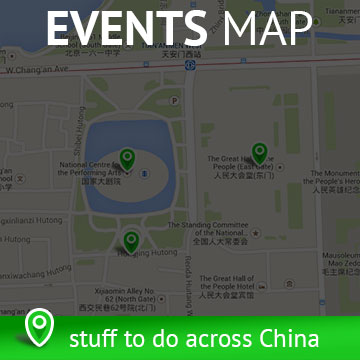Simply put, pinyin is a way to take the many thousands of ideograms that make up the Chinese language and put them into a more accessible Romanized format (i.e. using letters non-Chinese are more familiar with, instead of the seemingly random lines and squiggles that Chinese seem to have no problem with).

This system was introduced in the 1950s, and was officially adopted by the People’s Republic of China in 1979. Since, it has also been recognized by the International Organization of Standardization (ISO). It is important to note that this is strictly a method of Romanizing standard Mandarin, and not the various dialects of Chinese (specifically Cantonese, which is spoken in Guangzhou and Hong Kong).
Pinyin breaks down into three parts: tones, initials and finals. For information on tones, please visit our Guide to Chinese Tones. The other two are covered here.
Initials & Finals
As the name suggests, initials are what come first in a pinyin syllable, and are a consonant or pair of consonants.
The 23 Initials
Finalizing the syllable is the (also appropriately named) final. Finals break down into simple and compound.
The 6 Simple Finals
The 29 Compound Finals
Basically, take an initial, smash it up against a final, add a tone and you’ve got yourself a Chinese syllable. Let’s look at some simple examples:
dà (大) is the Chinese syllable (character) meaning “big”. It is made up of the initial ‘d’ and the final ‘a’ with the 4th (or falling) tone.
zhÅng (ä¸) is the Chinese syllable (character) meaning “middle”. It is made up of the initial ‘zh’ and the compound final ‘ong’ with the 1st (or flat) tone.
For a great chart listing the combinations of initials and finals, as well as a load of other pinyin rules – visit Pinyin Info.
Pronunciation
The mathematics of pinyin are quite simple and straight forward, but where most foreigners get lost is in the pronunciation. Though pinyin uses letters most of us are familiar with (even the funky looking ü doesn’t throw many of us off), the pronunciation of these letters can be remarkably different.
As this is only meant to be a short guide to basic understanding, we’ll leave the linguistical explanations to the professionals in our references below. But very briefly:
- Don’t pronounce X like Z (as in xylophone), but more like syee with a bit of a whistle between your teeth.
- Don’t pronounce Q like K (as in quick), but more like tch as in witch.
- Don’t pronounce R like, well, R (as in Rock On!), but more like the “ure” in leisure“.
Armed with this, you’ll be able to stumble through some basic phrases of Chinese, but for a much more thorough How-to on pronunciation, definitely check out Sinosplice: Pronunciation of Mandarin Chinese.
This all may seem a bit dizzying, but if you can spend a bit of time wrapping your head around pinyin (tones, initials and finals) you’ll be much, MUCH closer to understanding the fundamentals of the Chinese language. And you’ll notice almost immediately that people’s understanding of what you’re trying to say rises, while their laughter tends to decrease.







